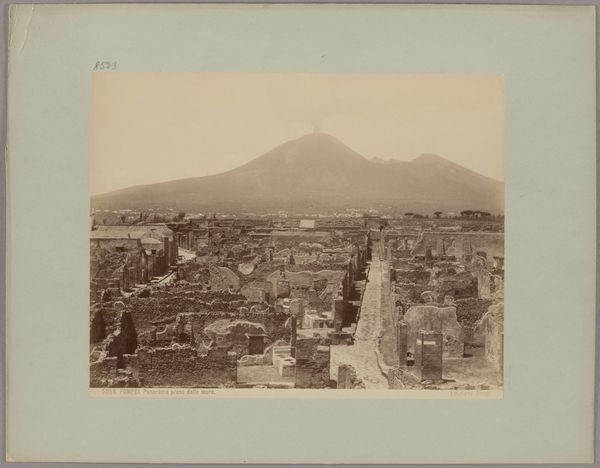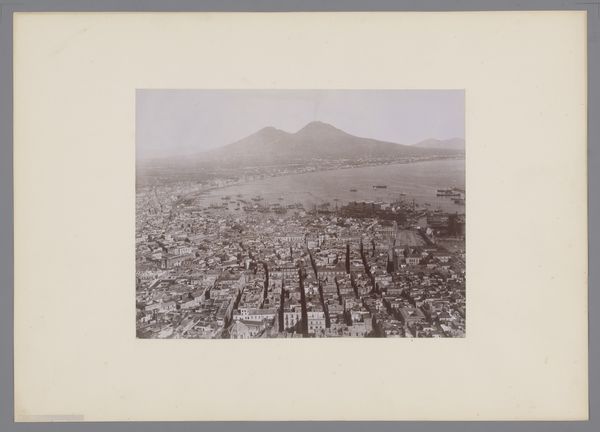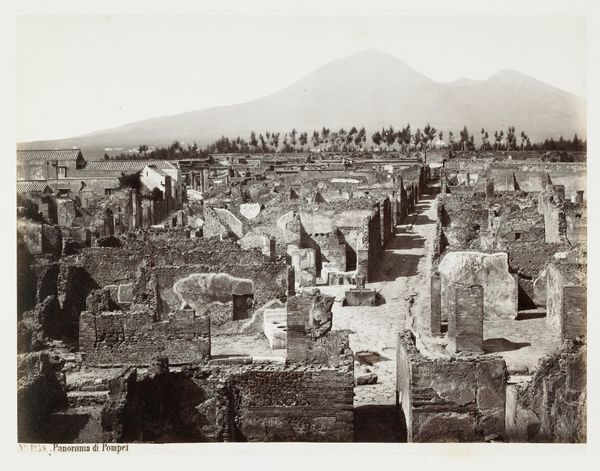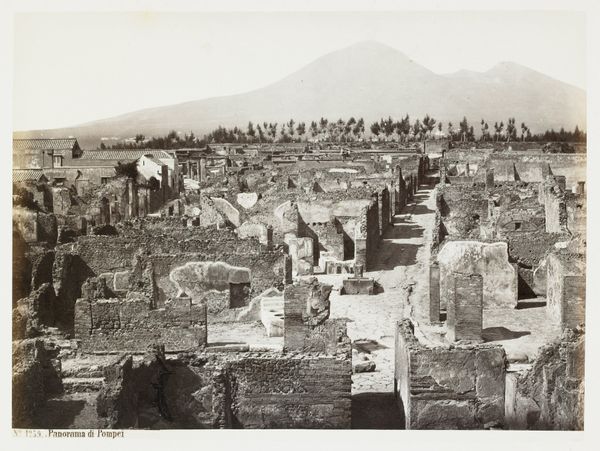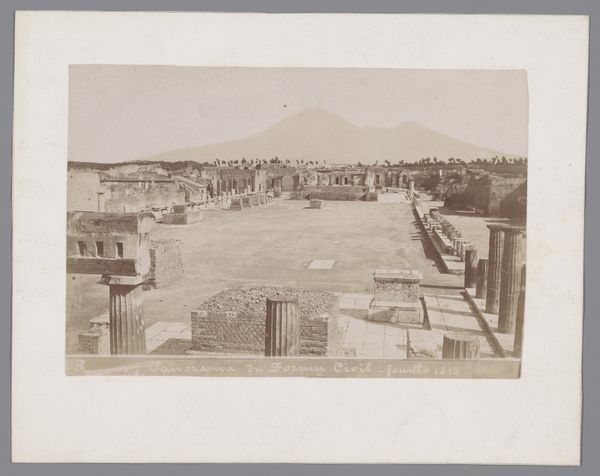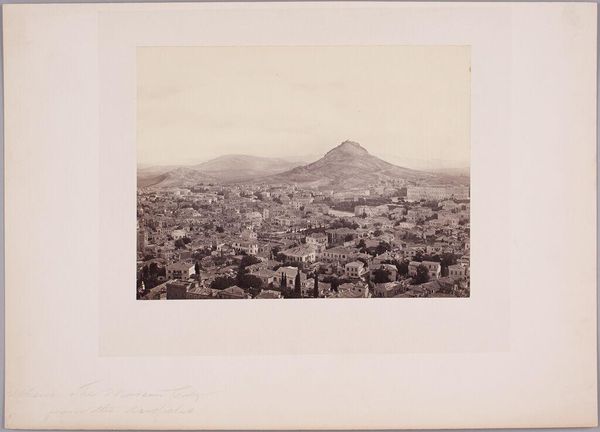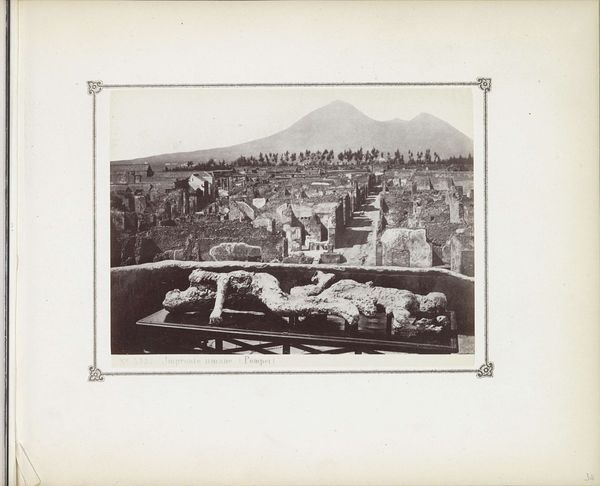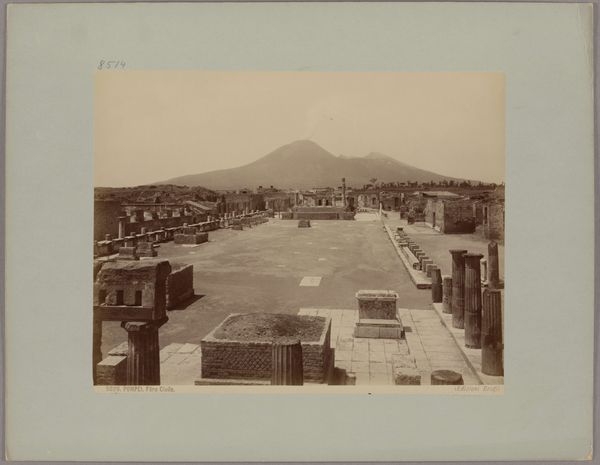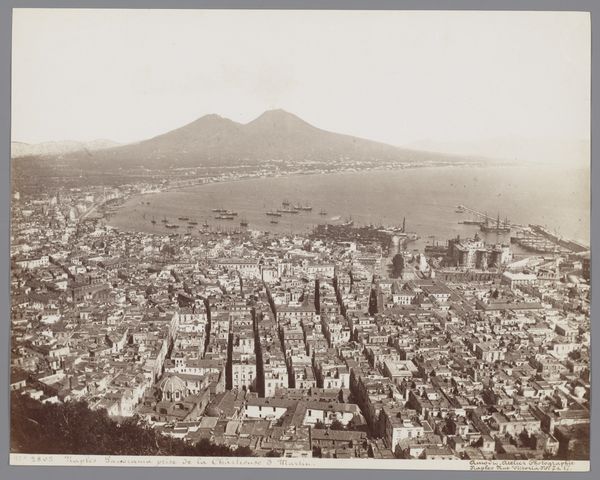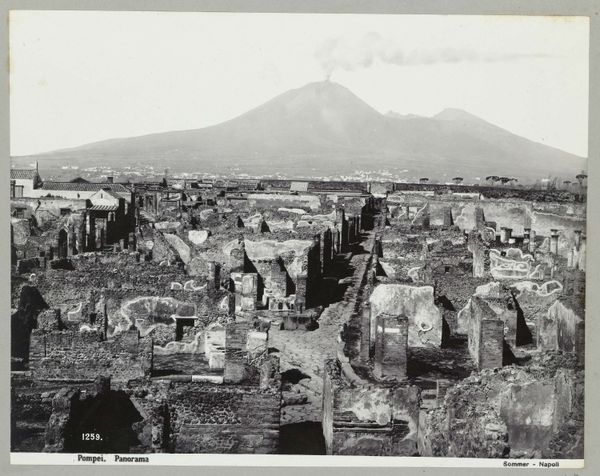
photography, site-specific, gelatin-silver-print
#
landscape
#
photography
#
ancient-mediterranean
#
site-specific
#
gelatin-silver-print
Dimensions: height 200 mm, width 253 mm, height 253 mm, width 355 mm
Copyright: Rijks Museum: Open Domain
Editor: So, this gelatin silver print, taken sometime between 1864 and 1881 by Giacomo Brogi, presents a view of Pompeii with Vesuvius in the distance. The scene is incredibly detailed, despite the visible ruins, but something about the photographic process itself is grabbing me... what stands out to you about this work? Curator: What I see here is a fascinating interplay between the ancient world and the industrial revolution. Brogi used a relatively new technology, photography, to document the excavation of a city destroyed by the raw materials spewed from a volcano. Consider the labor involved in excavating Pompeii – the sheer manpower used to unearth these ruins, revealing remnants of everyday life, and then Brogi, with his camera and chemicals, meticulously documenting that labor. Editor: That’s a great point! The photographic process, transforming silver and light-sensitive materials, parallels the destructive power of Vesuvius and its impact on organic matter. Curator: Exactly! And how were these prints circulated? Who consumed these images, and what was the social context of their consumption? Were they intended for scholarly study, or did they cater to a growing tourist market hungry for exotic landscapes and ancient history? What can the photograph, as a mass-produced object, tell us about the societal impact of Pompeii's rediscovery? Editor: It's amazing how focusing on the materials and their journey, from the volcanic ash to the darkroom chemicals, reveals so much about the picture's cultural implications and consumption during the Industrial Age! Curator: Right. By understanding the material conditions of both Pompeii’s destruction and its photographic recreation, we gain a richer insight into the history and its cultural legacy. Editor: I'm seeing the historical event from the perspective of labor and accessibility, it's incredibly eye-opening! Curator: Exactly! Considering how material shapes meaning brings art into our realm of understanding, which brings everything closer together!
Comments
No comments
Be the first to comment and join the conversation on the ultimate creative platform.
